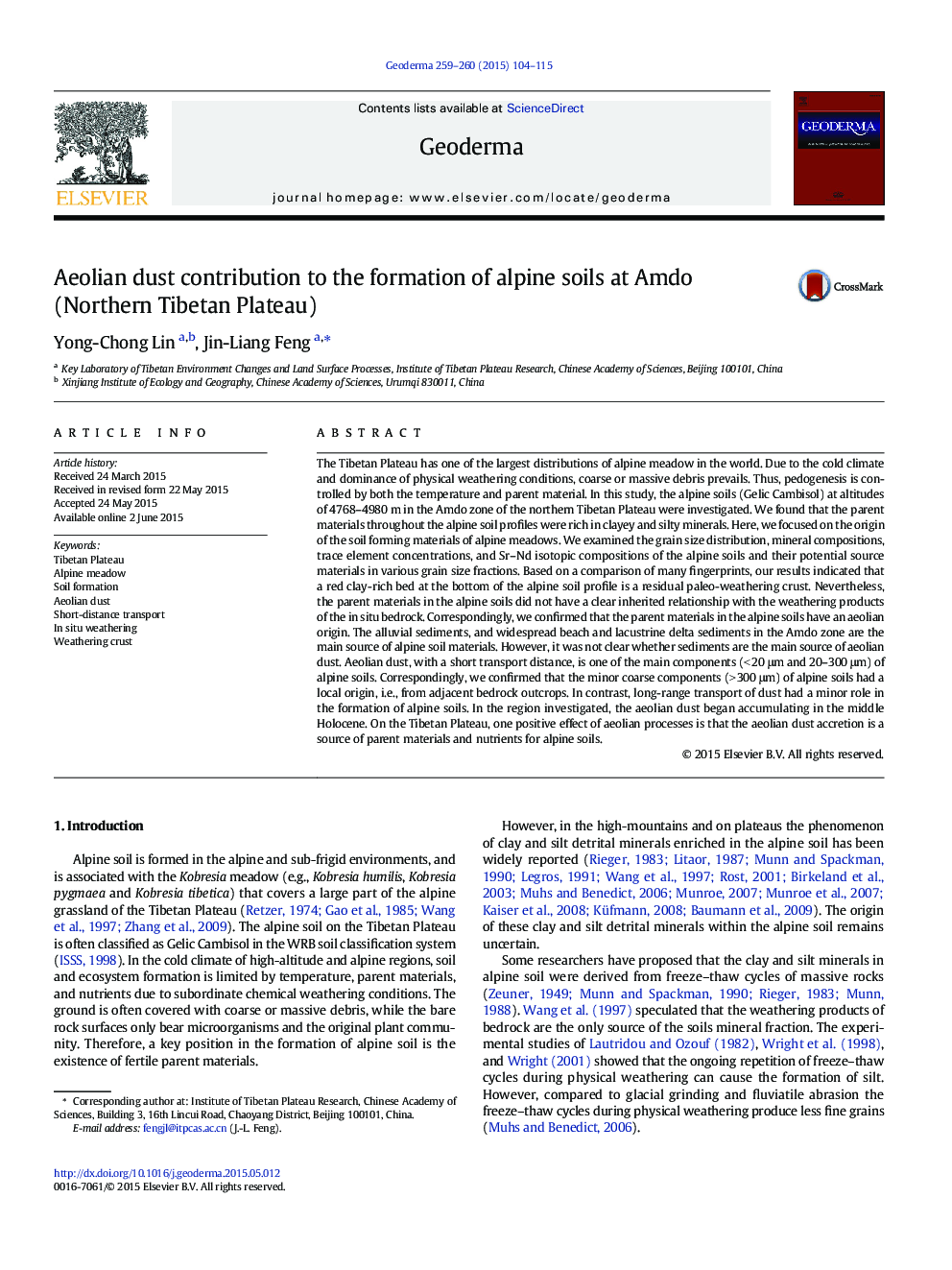| کد مقاله | کد نشریه | سال انتشار | مقاله انگلیسی | نسخه تمام متن |
|---|---|---|---|---|
| 6408506 | 1629456 | 2015 | 12 صفحه PDF | دانلود رایگان |

- Parent materials in the alpine soils are aeolian origin.
- Aeolian dust is the result of short-distance-transport dynamics.
- Aeolian dust accumulation started at about middle Holocene but is an ongoing process.
- Aeolian dust has an important impetus towards the development of alpine soils.
The Tibetan Plateau has one of the largest distributions of alpine meadow in the world. Due to the cold climate and dominance of physical weathering conditions, coarse or massive debris prevails. Thus, pedogenesis is controlled by both the temperature and parent material. In this study, the alpine soils (Gelic Cambisol) at altitudes of 4768-4980 m in the Amdo zone of the northern Tibetan Plateau were investigated. We found that the parent materials throughout the alpine soil profiles were rich in clayey and silty minerals. Here, we focused on the origin of the soil forming materials of alpine meadows. We examined the grain size distribution, mineral compositions, trace element concentrations, and Sr-Nd isotopic compositions of the alpine soils and their potential source materials in various grain size fractions. Based on a comparison of many fingerprints, our results indicated that a red clay-rich bed at the bottom of the alpine soil profile is a residual paleo-weathering crust. Nevertheless, the parent materials in the alpine soils did not have a clear inherited relationship with the weathering products of the in situ bedrock. Correspondingly, we confirmed that the parent materials in the alpine soils have an aeolian origin. The alluvial sediments, and widespread beach and lacustrine delta sediments in the Amdo zone are the main source of alpine soil materials. However, it was not clear whether sediments are the main source of aeolian dust. Aeolian dust, with a short transport distance, is one of the main components (< 20 μm and 20-300 μm) of alpine soils. Correspondingly, we confirmed that the minor coarse components (> 300 μm) of alpine soils had a local origin, i.e., from adjacent bedrock outcrops. In contrast, long-range transport of dust had a minor role in the formation of alpine soils. In the region investigated, the aeolian dust began accumulating in the middle Holocene. On the Tibetan Plateau, one positive effect of aeolian processes is that the aeolian dust accretion is a source of parent materials and nutrients for alpine soils.
Journal: Geoderma - Volumes 259â260, December 2015, Pages 104-115